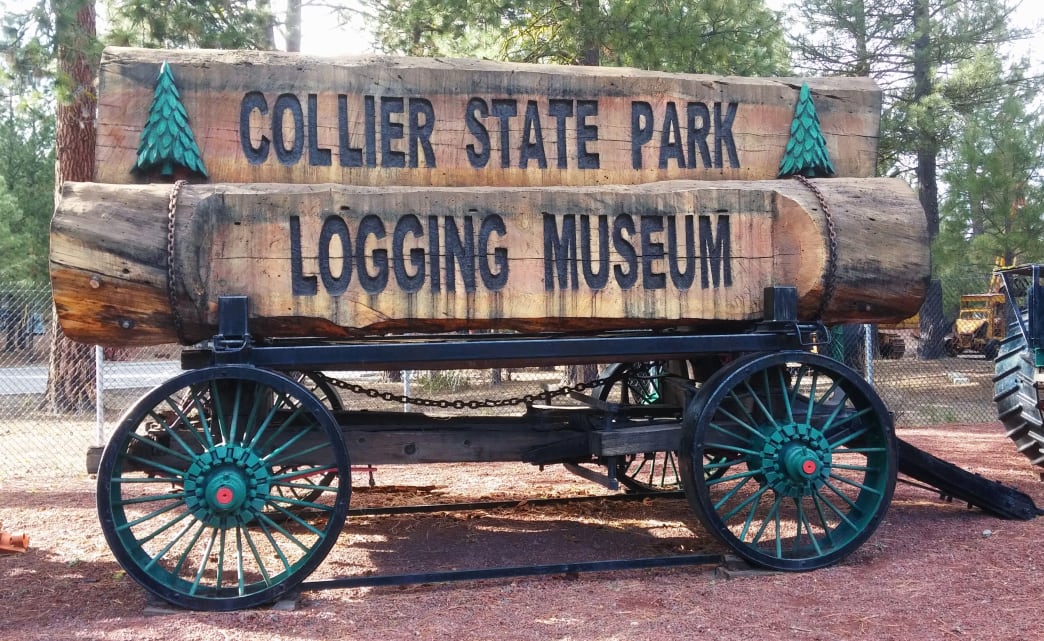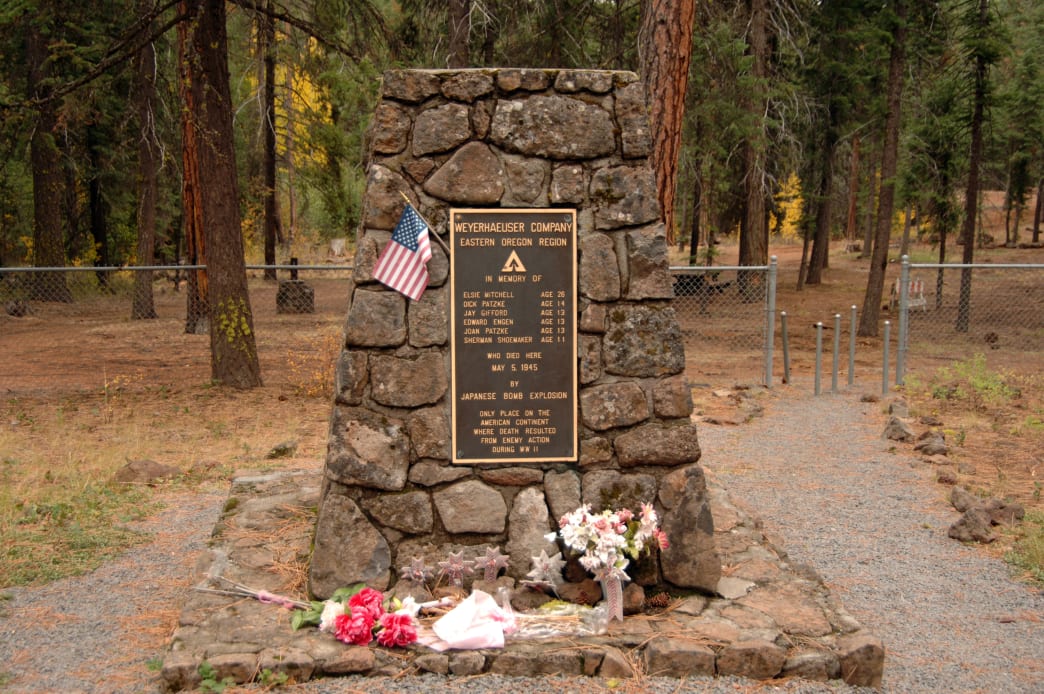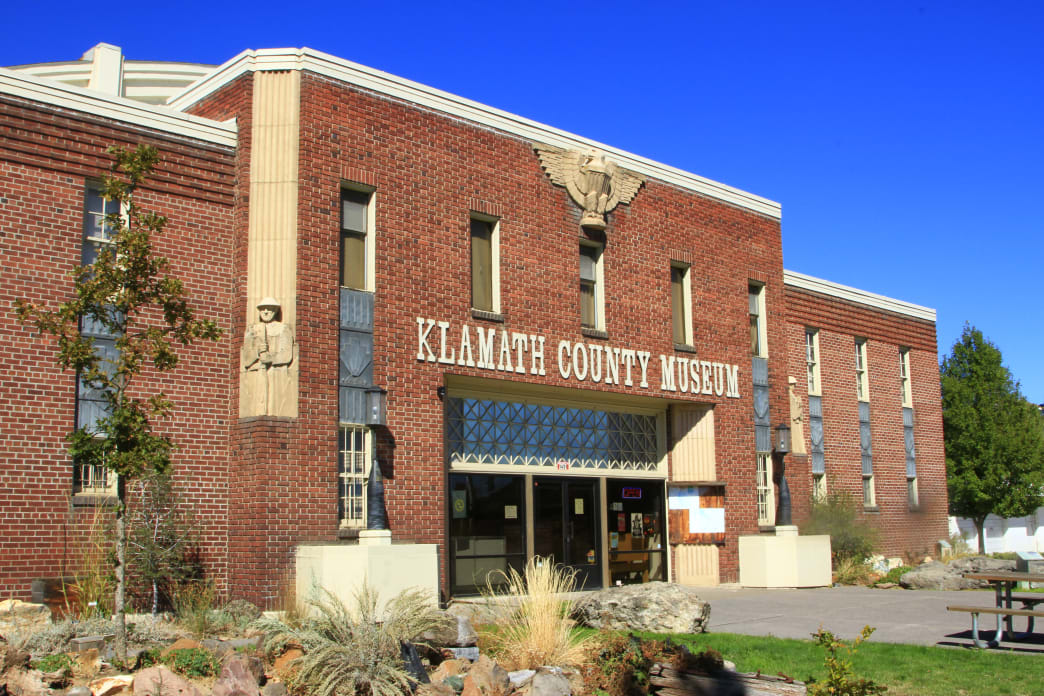Appreciate the History & Culture in Klamath County
Stretching from ethereal Crater Lake in the High Cascades to the fringe of the Oregon Desert, Klamath County is known for its outstanding natural scenery and outdoor recreation. But woven into its beautiful quilt of peaks, pine forests, lakes, and juniper woodlands is some truly engrossing human history from multiple Native American cultures and a famous Oregon Trail detour to one of the country’s most significant World War II landmarks. Here are six must-experience components of Klamath County’s cultural heritage.
1. Native American Culture
Klamath County claims a rich Native American heritage, serving as it does as the traditional homeland of such indigenous cultures as the Klamath, Modoc, and Yahooskin, now recognized together as the Klamath Tribes. From the marshes of the Upper Klamath Basin to the conifer forests of the highlands, these people found rich pickings across this varied landscape.
Besides the traditionally hunted-and-gathered land itself, you’ll find much history of the early interactions between Native Americans and Euro-Americans in Klamath Country. That includes the 1872-1873 Modoc War, which saw skirmishes between the U.S. Army and a Modoc force led by Kintpuash (aka “Captain Jack”). His group left the Klamath Reservation and took refuge in the rugged basalt outback of today’s Lava Beds National Monument (just across the border in California).
The Fort Klamath Museum, which preserves the site of an 1863 U.S. Army outpost, is home to the gravesite of Captain Jack, executed here along with three other Modocs in 1873. Other graves of Modoc War veterans can be found in the historic Linkville Pioneer Cemetery. You can view exhibits and artifacts reflecting local Native American culture at the Klamath County Museum and Favell Museum in Klamath Falls as well as the Merrill Historical and Modoc War Museum.
2. The Applegate Trail
One of the formative thoroughfares of Euro-American settlement of the far west, the Applegate Trail passes through Klamath County. Also called Applegate’s Cutoff or the Southern Emigrant Road, this was an alternative route to the Oregon Trail’s final stretch, taking pioneers to the Willamette Valley. The path broke from the Oregon Trail at Fort Hall, Idaho, and followed the California Trail along the Humboldt River. It edged the Goose and Upper Klamath lakes before crossing over the Cascades into the Rogue River Valley and heading north to the Willamette.
The trail is named for the Applegate brothers, Jesse and Lindsay, who along with Levi Scott, led the group who blazed the trail in 1846. In 1992, the National Park Service declared the Applegate Trail, which was in heavy use until about 1860, as an official National Historic Trail.
3. Logging Heritage

See vintage logging equipment at Collier Memorial State Park. Discover Klamath
As across much of the Northwest, logging was and remains an important part of Klamath County’s story. While small-scale lumbering began in the late 19th century, operations significantly expanded once the Southern Pacific line reached Klamath Falls. Some of the demand (as the Oregon History Project notes) came from a booming California fruit industry in need of boxes, for which Klamath County ponderosa pine became a ready source. One of the best places to get a tangible feel for the history of the timber industry is Collier Memorial State Park and Logging Museum just north of Chiloquin. Here you’ll see a slew of vintage logging equipment and machinery, from old-school steam donkeys and log loaders to more modern advanced power saws and a fully operational sawmill.
4. Klamath County’s Rail History
The first railroad in Klamath County was directly connected to the logging industry: A small segment of tracks was installed for the Pokegama Sugar Pine Lumber Co. to haul logs along the Klamath River—using a steam locomotive nicknamed “Old Blue.” You’ve got multiple options for soaking up the railroad heritage of Klamath County, including Chiloquin’s Train Mountain Railroad Museum, which boasts the most extensive private caboose collection in the world as well as a huge miniature railroad. Among its exhibits is a fascinating look at the snow-removal equipment employed on rail lines in the Cascades. Train rides are offered in the summertime (and for special occasions) by the Klamath & Western Railroad, Inc., where the whole family can climb aboard for a fun ride.
5. World War II in Klamath County

The Mitchell Monument commemorates the only World War II deaths caused by enemy action in the continental U.S. U.S. Forest Service- Pacific Northwest Region
About 65 miles northeast of Klamath Falls, the Mitchell Monument commemorates the only deaths in the continental U.S. caused by enemy action during the Second World War. Here Elise Mitchell and five Sunday school students were killed when they inadvertently detonated a Japanese balloon bomb while on a picnic on Gearhart Mountain near Bly. These balloon bombs, which the Japanese called fugos (“wind ships”), were designed to ride the jet stream eastward and make landfall in the northwestern U.S., where they were intended to spark wildfires and panic the public.
The U.S. government kept information about this windborne assault, which never did result in widespread blazes, under wraps so as not to alarm the public, and the discouraged Japanese aborted the campaign after only six months. In 1995, upon being informed of the fatal detonation on Gearhart, former Japanese schoolchildren who’d been conscripted to make balloons for fugos sent 1,000 paper cranes—a healing symbol in Japan—to the families of the deceased as well as six cherry trees to be planted at the site. The Mitchell Monument is now a picnic area in addition to a National Historic Site, where, besides the memorial itself, you can see the “Shrapnel Tree,” a ponderosa still visibly scarred by that long-ago blast.
6. Tour the Historic Downtowns in the Region

The Klamath County Museum is a great place to start learning about the history of the region. Discover Klamath
There’s plenty of eye-catching history on display in historic downtowns in several Klamath County locations. Klamath Falls was originally called Linkville, and it was formally incorporated in 1905, just a few years before the railroad arrived. (No Oregon city grew faster than Klamath Falls in the 1920s when it was the biggest shipping hub between Portland and San Francisco.) On a downtown walking tour centered on Main Street—which comes handily bookended by the Klamath County Museum and the Discover Klamath Visitor Center—you can check out such landmarks as the first county courthouse (4th and Main), dating from 1888; the 1905-built Baldwin Hotel (31 Main St), now a museum; and the striking Oregon Bank Building (905 Main St), built in 1929 in Art Deco/Gothic Revival style and among the few buildings on the West Coast still employing an elevator operator.
In the town of Malin, you can start by exploring the Malin Historical Society and Museum, which is located in a building constructed in 1919 from native basalt rock. Inside you’ll find artifacts on display that highlight natural history, Native Americans and the Modoc War, and the Czech immigrants to the area. Malin’s Broadway Theater was built in 1930 by some of the original Czech settlers to the region. After being boarded up and unused for 44 years, the theater is now open again after a restoration. It’s a popular community space for performances and films. The historic Gilchrist Mall in downtown Gilchrist was built in 1939 and was the first mall in the state built east of the Cascade Mountains. Gilchrist was the last lumber company town built in Oregon, and the mall featured everything the employees needed, including a grocery store, beauty parlor, post office, and bowling alley. The stores may have changed over the years, but the building remains the same.
Written by Ethan Shaw for Matcha in partnership with Discover Klamath Visitor and Convention Bureau.


